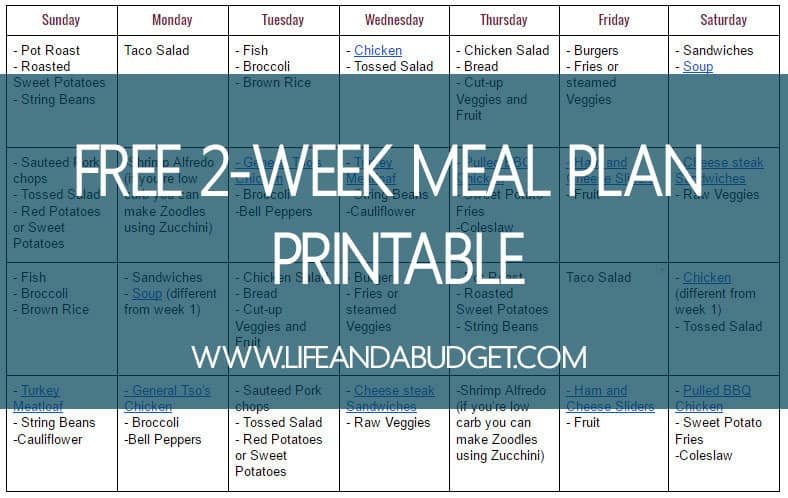A dear reader recently asked, “How do I break an eating out habit?”
This is part of a new ongoing series here at LAAB to address real issues and help you all find solutions to your worrisome money woes.
Considering I need to work on this little bad habit myself, I decided to tackle this question today and will tackle one each week as long as you keep them coming!
As always, if you have a question you would like to see answered here on LAAB, I have created a Google form where you can submit your questions.
Without further delay, let’s dive right into how one can break an eating out habit!

How Do I Break an Eating Out Habit?
1) First things first — find out how much your habit is costing you.
There’s no need in going through all the trouble of tackling an issue if you don’t know how much it’s costing you! To be a good friend and to show that I’m human, I’m going to share with you how much we spent eating out in the last 30 days.
According to my spending in Personal Capital (a free tool to help track expenses), in the past 30 days, we’ve only spent $43.
I wasn’t satisfied with this number, not because it was too high, but because I feel like we’ve been spending more money on eating out than this number is reflecting. Therefore, I decided to see how much damage we’ve done in the past 90 days.
This was more like it — $573 spent on eating out in the last 90 days. Now, this number is way to high because that’s an average of $191 per month!
Seriously! I could have had plenty of groceries with that amount of money. I could have had groceries and an extra payment on my student loans with that kind of money!
This step is designed to make you have a come to Jesus moment. If your spending is off the charts, it will help you gain focus as you move forward with these next few steps.
Your Assignment: Track your restaurant expenses for the last 90 days. You can use a free tracker like Personal Capital to figure out this number.
2) Commit to a no-eating-out challenge.
Alright, you know how much damage eating out is costing you each month. Now you need to make a commitment as a family or couple to do a challenge for AT LEAST a month. It takes around 21 days to form a new habit and this will give you plenty of time to put forth some effort to not eat out.
Your Assignment: Pull out your calendar and set a date to commit to your no-eating challenge.
3) Define no-eating-out.
To be successful, you need to define what no-eating-out will mean for you as an individual and/or a family.
Will this challenge include grabbing a quick sandwich at your work cafe? Does it include your children’s spirit night festivities with the school? Will it include chipping in for pizza with your friends? Or is this just specific to grabbing takeout or a sit-in restaurant?
Whatever you decide, you want to make the conditions clear so they are easy to follow. If you plan to exclude grabbing a quick sandwich at your work cafe, you will need to plan to bring in your lunch.
If it will include skipping your child’s spirit nights (my child’s school has spirit nights at restaurants where a portion of the sales from the evening go to the school’s PTO, in case you’re wondering), you need to let your child know the plan so they won’t be upset that they aren’t participating.
Basically, create a plan B for any exclusions so you will be prepared. This will make things go smoothly as you follow through on your commitment to no-eating-out for a month.
Your Assignment: Get everyone on the same page and discuss the limits and conditions of your no-eating challenge.
4) Write down everyone’s favorite foods.
This list will help you make a meal plan that everyone will enjoy. You should also include favorite snacks, etc. You want to include as much as possible because this will prevent last minute trips and make the experience more enjoyable.
Your Assignment: With pad and pencil in hand, brainstorm all of your favorite foods and those of your loved ones as well.
5) Once you know everyone’s favorites — create a meal plan.
You will need to create TWO meal plans.
Why?
Well, this will make your life extremely simple! Create two meal plans that span a week each and you can rotate each week’s meal plan.
This means you will use Meal Plan 1 on Week 1 and Week 3. Then you would use Meal Plan 2 on Week 2 and Week 4.
If your family is at home for breakfast, lunch, and dinner, include all three meals in your meal plans for each given week. However, if the only meal you eat together as a family is dinner, create a meal plan just for dinner.
How to Plan for Lunch
If you’re taking your lunch to work and/or school each day, create a list of standard grab and go lunches that you can create for the week.
For example, your lunch menu can consist of sandwiches, fruit, veggie, and water each day. This eliminates guessing and planning for one meal. Just have the same ingredients on hand each day to prepare your lunch.
To help you out, I’m providing you with a sample two-week dinner meal plan for you to use.
This meal plan includes tips and tricks for making the rotating meal plan easy. It also includes clickable links to some of my favorite variations on some of the suggested meals.
To download your copy, click the picture below (This is a viewable Google document only. Go to file > make a copy > enjoy!).
If this sample meal plan doesn’t tickle your fancy, just remember one thing when you create your own – keep it simple! Simple means one meat and two veggies (if you’re low-carb) or one meat, one veggie, and one starch, etc.
Your Assignment: Print off the sample meal plan for your personal use. If this one won’t cut it or doesn’t align with your eating habits, use this link to grab a blank printable you can use to create your own (This is a viewable Google document only. Go to file > make a copy > and happy meal planning).
6) Always have an “I ain’t cooking meal,” on hand!
Trust me, no matter how much you plan you will always have one of those days where you don’t feel like doing anything. That includes feeding your face.
I have one at least once a month and I know a good ole pizza or breakfast items will solve the dilemma of feeding my family.
Keep some of the following on hand for your no good terrible day:
- Frozen pizza
- Soups
- Bread (I like to keep extra bread in the freezer)
- Peanut Butter
- Jelly
- Grits (y’all know I’m country)
- Eggs
What can you do with these items?
Well, you can whip up a bite to eat in a flash! Grits take about 5 minutes to cook. Throw some cheese on them and my daughter is a happy camper. Or pop a pizza in the oven and dinner is ready in 15 to 20 minutes.
I don’t eat this stuff every day, but they are lifesavers for when I don’t want to cook.
Your Assignment: Create a master grocery list that includes the things you need to have on hand at all times for breakfast, lunches (as discussed in the prior step), snacks, and “I ain’t cooking” meals. You will need this in addition to your grocery list for your dinner meal plan.
7) Additional Resources
Of course, I’m including some additional resources that will help you with meal ideas and ways to keep your grocery bill from blowing up. Here is a list of some quick and easy meals you can add to your meal plans below.
23 Quick and Cheap Meals to Feed The Family For Under $6!
The Best Guide to Meal Planning on a Budget
Follow my Pinterest Board, Frugal Dinner Ideas, for more resources!
Wrapping Things Up
I hope this answers your question, dear reader! Simply make a plan and stick to it. Once you’ve done this challenge for a month, come back and drop me a line on how much money you’ve saved. And no worries — I’m doing it right along with you. We’re doing much better with meal planning this month and have reigned in our eating out expenses.


